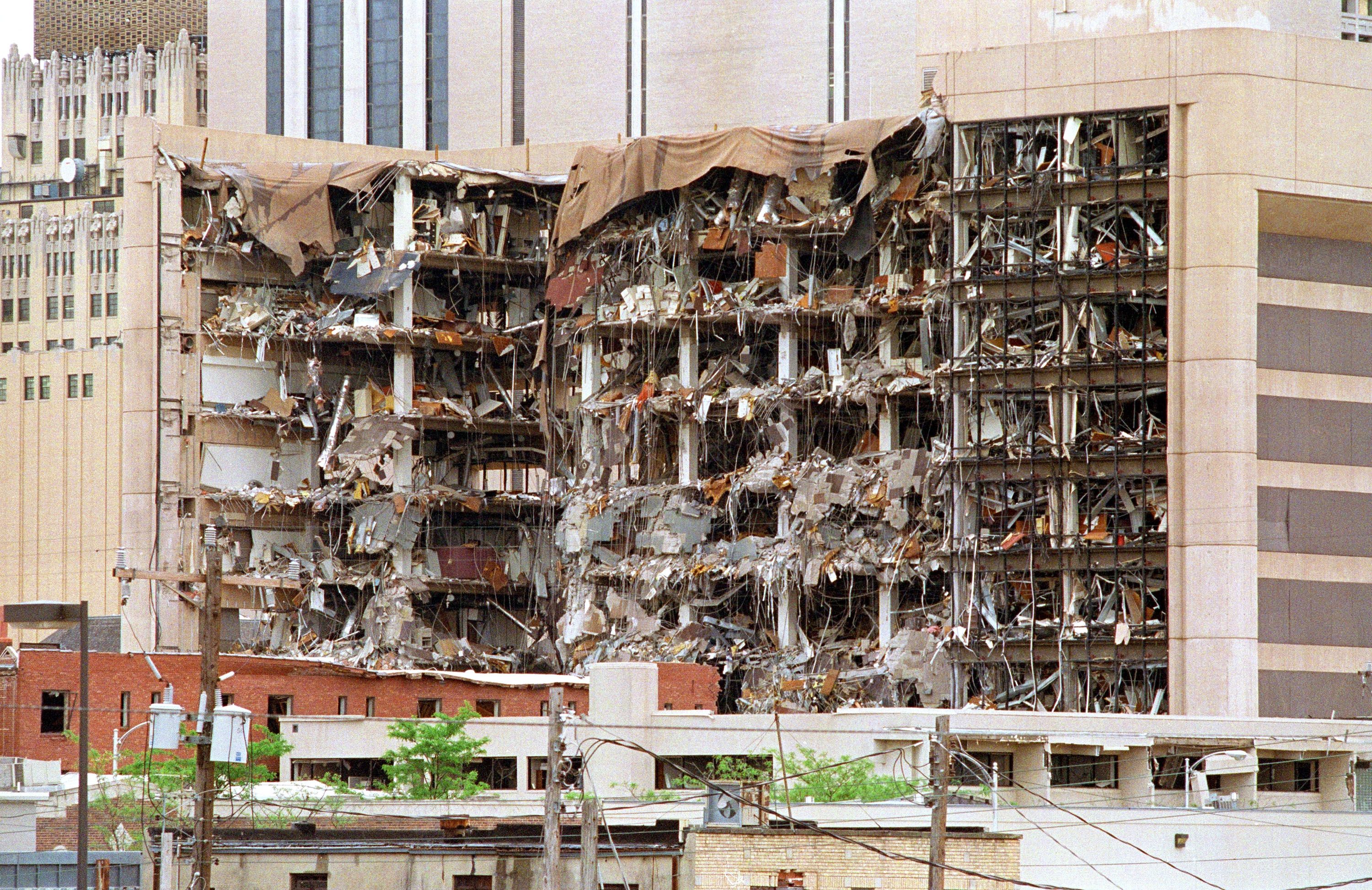Oklahoma City Bombing Survivor Story: How Amy Downs Turned Tragedy Into Triumph

Oklahoma City Bombing Survivor Story: How Amy Downs Turned Tragedy Into Triumph
“I was buried alive—but I refused to stay buried.”
— Amy Downs, survivor of the Oklahoma City bombing
Introduction
In the annals of American history, few tragedies have struck as deeply as the Oklahoma City bombing. On April 19, 1995, a brutal act of domestic terrorism changed countless lives in an instant. Among the survivors was a woman named Amy Downs, whose powerful story of resilience, reinvention, and recovery has touched hearts for decades.
As we mark the 30th anniversary of the Oklahoma City bombing, we revisit this Oklahoma City bombing survivor story to uncover how Amy turned unimaginable tragedy into an extraordinary journey of personal transformation. Her story isn’t just about survival—it’s about rising again with purpose.
What Happened on April 19, 1995?
At 9:02 AM, the heart of downtown Oklahoma City was shattered by a 168-death explosion that tore through the Alfred P. Murrah Federal Building. The perpetrator, Timothy McVeigh, had parked a Ryder truck filled with explosives right outside the building, igniting a blast that would become the deadliest act of domestic terrorism in U.S. history at the time.
Children, government workers, and ordinary civilians were killed or severely injured. The attack sent shockwaves across the nation, altering the American psyche forever. And in the middle of it all, trapped beneath concrete and steel, was Amy Downs, then a 28-year-old credit union employee.
Amy Downs’ Story: From Tragedy to Survival
Amy’s day had started like any other. She worked at Federal Employees Credit Union, located on the third floor of the Murrah Building. Just moments before the blast, she was having a routine conversation with a coworker. Then—everything went black.
“I heard a loud boom and suddenly I was falling… falling into darkness,” Amy later recalled.
When the dust settled, Amy was alive—but buried beneath rubble. She couldn’t move. She could barely breathe. Trapped for over six hours, Amy experienced what many would consider a living nightmare. The air was thick with debris. Screams echoed. Hope faded.
Yet she held on. Through sheer determination and prayer, she stayed conscious until rescue workers finally found her and pulled her from the wreckage.
The Turning Point in Her Life
Surviving a disaster of this magnitude would seem like the end of a harrowing story—but for Amy, it was the beginning of a new life. In the weeks following the bombing, she was filled with grief, guilt, and emotional trauma. She had lost 18 coworkers. She had barely survived. She had never truly lived the life she wanted.
“I realized that I didn’t want to be a victim forever. I didn’t want to just survive—I wanted to become someone,” Amy shared in an interview.
That moment of clarity became her turning point. She started to view her survival as a second chance—a calling to pursue the dreams she had put off, to take care of her body, mind, and soul, and to find meaning beyond the destruction.

Life After the Bombing: Amy’s Reinvention
In the years following the bombing, Amy made dramatic changes to every part of her life.
She began by focusing on her health. She lost over 200 pounds, overcoming a lifetime struggle with obesity. She started cycling and completed Ironman triathlons, feats of strength and endurance that require months of disciplined training.
She also pursued education. A college dropout at the time of the bombing, Amy returned to school, eventually earning her Master’s degree. She climbed the ranks at the credit union, eventually becoming the CEO of the same institution where she was once a front-desk employee.
Spiritually, Amy underwent a profound shift. Her faith deepened, as did her understanding of how trauma can open the door to purpose.
“That day buried my body, but it also unearthed something inside me—a version of myself I never knew existed.”
Today, Amy is not only a leader in her field but also a motivational speaker, sharing her story across the country to inspire others facing seemingly insurmountable odds.
Lessons We Can Learn from Her Journey
Amy Downs’ Oklahoma City bombing survivor story is more than a tale of survival—it’s a testament to the human capacity for transformation.
Here are a few lessons we can draw from her powerful journey:
- Trauma doesn’t define you — How you respond to it does.
- Resilience is a choice, often made in your darkest hour.
- Transformation requires action — Amy chose to live differently after surviving.
- Hope and purpose are not always found before tragedy, but often revealed through it.
These lessons resonate far beyond the context of the bombing. They’re universal, reminding us all that adversity can become the soil in which purpose grows.
Why Her Story Matters 30 Years Later
Three decades later, the Oklahoma City bombing remains one of the darkest chapters in American history. But within that darkness, stories like Amy’s offer light—proof that tragedy doesn’t have to end us. It can remake us.
Amy’s story matters because it shows us what post-traumatic growth looks like in real life. In a world often overwhelmed by conflict, violence, and despair, her journey brings hope and healing.
As we remember the victims and survivors of April 19, we must not only mourn the loss—but also celebrate the courage, resilience, and strength that rose from the ashes.
Also Read : OPPO Agentic AI Unveiled at Google Cloud Next 2025
Conclusion
Amy Downs was buried alive beneath the rubble of hatred. But she chose to rise—stronger, wiser, and more determined than ever. Her story is a beacon for anyone who has faced darkness and is searching for light.
Let us remember the Oklahoma City bombing not just as a moment of horror, but as a reminder of how powerfully human beings can endure and transform. And let us carry forward the legacy of survivors like Amy—because stories like hers deserve to be told, again and again.
Frequently Asked Questions (FAQ)
Q1: Who is Amy Downs in the Oklahoma City bombing?
Amy Downs is a survivor of the 1995 Oklahoma City bombing. She was trapped in the rubble for over six hours and later rebuilt her life, becoming an Ironman triathlete, CEO, and motivational speaker.
Q2: How did Amy survive the bombing?
Amy was on the third floor of the Murrah Building when the explosion occurred. She was buried under rubble and rescued after hours of being trapped.
Q3: What did Amy Downs do after the bombing?
Amy lost over 200 pounds, earned a master’s degree, became the CEO of her credit union, and now speaks nationally about resilience and personal growth.
Q4: What is the significance of her story today?
Her story embodies resilience and reinvention. It continues to inspire people facing trauma or difficult life circumstances—even 30 years after the attack.
🙌 Share and Reflect
If Amy’s story moved you, please share this post. You never know who might need the strength and hope it carries. Let us honor those affected by the Oklahoma City bombing by keeping their stories alive.
